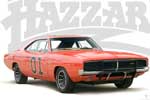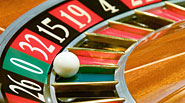
How to play Blackjack (and Win)
I always thought that Blackjack, or 21, was a simple game that I was unlucky at. The rules seemed easy enough: the combined sum of my playing cards had to be greater than the dealer’s cards without “busting” (or exceeding a score of 21). My basic strategy was to hit, or ask for additional cards, whenever my sum was 16 or less, and to stand on a 17 or above. I never realized that there was so much more to the game or that by memorizing a few simple rules I could increase my odds of winning dramatically.
In preparation for a recent vacation to Las Vegas, I read a book called “The Winner’s Guide to Casino Gambling” by Edwin Silberstang. It outlined a few simple rules that when followed, can greatly increase your chances of winning any given Blackjack hand. In fact, when the rules are followed the House advantage narrows significantly (to less than 1%). During my Vegas vacation I was able to make my money last for hours, and even doubled my money on many occasions.
I have included a table in addition to my explanations, which should be memorized. At first glance it might seem like a pain in the ass, but in reality it is actually quite intuitive. The first thing you should notice on the table is that you must pay attention to the dealer’s face-up card as well as your own. A Vegas dealer will deal one card face up to each player, then deal one card face down to herself. Then she will deal one more card face up to each player, and deal a second card face up to herself.

The first thing you need to do is add up the sum of your own cards. Each card from 2 to 9 takes the point value of its number (for example a 2 of clubs would be worth 2 points), while 10s, Jacks, Queens, and Kings are called face cards and are worth 10 points each. Aces can count for either 1 or 11 points. If neither of your two cards is an Ace you have what is called a “Hard” total, and if one of your cards is an Ace you have a “Soft” total; this is because your Soft pair’s total may vary depending on whether your Ace counts as a 1 or an 11. An Ace combined with a face card will total 21 – also known as a Blackjack. If the dealer is showing an Ace they will offer insurance to the players; this means that you can bet half your initial wager that the dealer has a Blackjack. Even if the Dealer tells you it’s a good deal you should never buy insurance (unless you are counting cards and know that the cards are in your favour).
Now look at the table; An “H” on the table means hit, “D” means double down, “S” means stand, and P means split. “R” means surrender, but this option is not available on most Vegas tables. Those casinos that allow you to surrender will give you half your initial wager back.
Hard Totals
If your hard total is 8 or less you should always hit, as you are in no danger of busting with one more card. If your hard total is 9 you should always hit, unless the dealer has a 3, 4, 5, or 6 showing in which case you would double down (or double your wager) before taking one more card. Computer models show that you are likely to win these hands, because the dealer must hit if their total is under 17 and is likely to bust. You should also double down if your hard total is 10 or 11 (unless the dealer shows a 10 or Ace to your 10). You are very likely to win these hands.
If your hard total is 12 to 17 things get slightly more complicated. Take a look at the table and you find that in most cases you stand if the dealer’s card is a 2 – 6, and you hit if the dealer’s card is a 7 – A. Once again, this is because the dealer must hit if their total is 17 or less, and is likely to bust. If your hard total is 17 – 21 you should always stand.
Soft Totals
A soft total means that one of the cards in your hand is an Ace, and can count as either a 1 or an 11. As can be seen from the table you usually want to hit these hands in order to increase the odds of improving them. Generally the 7 – A rule applies here; if the dealer has a 7 – A card showing you want to hit. Pay attention to, and memorize the situations when you want to double down; computer models show you are likely to win in these situations if you follow the rules. If you cards have a soft total of 19 or higher you generally want to stand; taking additional cards will usually not improve your total.
Pairs
There is a cool rule in Blackjack that if you get a pair, you can split them up and play them as two separate hands (note that you must ante up an additional wager on this hand). Sometimes this is a very good idea, but there are times when you don’t want to split your pair. Look at the table; you should always split Aces because each can form a strong hand with another card, but two Aces as a pair are weak (they either total 2 or 22 – blah). Also note that when you have a pair of 10s you should always stand, as they total 20 which is a very strong hand. Use the table to memorize how to play your pairs; it might take some time but it will be worth it to know when to double down, hit, stand, or split.
It is not illegal or against Casino rules to memorize this table and use what you’ve learned in a casino. If you want you can even print out the table and bring it to your game (you might look kind of lame doing so, however). In my experience it will take a couple of hours to memorize the table combined with practice. Those who want to make serious money playing Blackjack will need to learn to count cards; there are many books available that will teach you to do this. Personally, I prefer to just have fun while decreasing the House advantage as much as possible.

- How to play Blackjack (and Win)
- by Beauty
- Published on January 1st, 2006
More from Beauty:
-

The Art Gallery of Ontario (Toronto)
Degas at the AGO
The R4NT crew walked to the Art Gallery of Ontario (AGO) after visiting Toronto’s famous CN Tower. We entered the lobby of the Gallery and found ourselves standing in a large room containing several information booths and pamphlet stands. The ticket line was pleasingly short, and we were able to get tickets … -

How to play Blackjack (and Win)
My basic strategy was to hit, or ask for additional cards, whenever my sum was 16 or less, and to stand on a 17 or above. I never realized that there was so much more to the game..
-

Game Spotlight: Fable for Xbox
Fable has aimed for new heights of realism, as they introduce the ability to start a family, acquire real estate and tattoos, and much more.
-

How to spend your money at the movies this year
Summer is just around the corner, and that means the theaters will be flooded. The studios will take advantage of the nice weather and people’s summer vacation schedules to release the best films of 2005.
-

How to play Roulette
You are allowed to bring a pencil and paper to keep track of the numbers that have come up, or study the numbers on the electronic display supplied by the Casino.
-

Viva Piñata: A Game Previewed at X’06
The main purpose of the game is to create a unique fantasy world that will attract colourful piñatas to live. This concept reminded me of games such as Roller Coaster Tycoon as each structure and feature of the world is placed and built by the player, right down to miniscule details such as the terrain of the land.
Other recent features:
-

Sónar 2010 – Barcelona, Spain
The festival attracts a lot of outsiders, but the Mediterranean, Spanish and more specifically Catalan nature of the people makes the festival what it is. Catalan people are passionate and this passion is infectious. The atmosphere is electric in Barcelona as a city and heightened by music and intoxicants at Sónar.
-

Summer Party Naval Styles at Seven RestoLounge
Oysters, like wine are affected by terroir and these Miyagi’s flavor profiles ranged with one showing a cleaner, almost tropical profile and the other being more salty, marine driven. As I was devouring the seemingly endless plates put in front of us, I sipped on a glass of fine sauvignon blanc.
-

R4NT Radio March 2010
R4NT Radio March 2010 um wow it’s been far too long since the last edition edition, featuring: Hector Hernandez, The Infesticons, Blockhead, Gramatik, Emika, Thunderheist, Parov Stelar, Eddy Meets Yannah, Anti-Pop Consortium, The Slew, Lighterthief, Andreya Triana, Parasyte Woman, Mathon, Venetian Snares, and Funki Porcini.
-

O Restaurant & Lounge revisited
Calgary has a diverse set of urban communities, most of which have the ubiquitous strip mall watering hole. In the South West community of Marda Loop, a reinvention of this paradigm has been established.
-

Predictions 2010.. and beyond!
So 2010 eh? Almost but not quite (no year zero they say) another decade? It seems like just yesterday that the world was waiting for Y2K. R4NT started publishing in March 2001, so we’re not quite 10 years old yet, but in internet years we are already a senior citizen.
-

Invictus
No matter what, the reality of Nelson Mandela is something that deserves screen time. Should this film even remotely intrigue the masses to take interest in this figure, the world would likely benefit greatly from it.

